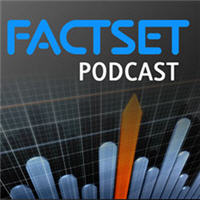I thought that this week, therefore, I would merely commentate on what can be seen and let you the reader agree or disagree and then set your own expectations.
I wrote a month ago that there seemed to be a lack of conviction in the positive run on the market through observation of the amount of cash that active managers were still keeping in terms of asset allocation, and while the continuing rally has seen that allocation reduce, it is the nature of this reallocation that I want to examine.
I therefore present the below chart of percentage contribution of factor risk when comparing the active index Lipper Large Cap Core against the S&P 500. (I have generated the data using the APT United States factor risk model as by its nature it separates systematic risk from unsystematic without any pre-specification of factors and, therefore, is free from any potential bias that another construct might be accused of introducing.)
 The chart shows how the nature of the risk over the last couple of years has varied in terms of the systematic contribution.
The chart shows how the nature of the risk over the last couple of years has varied in terms of the systematic contribution.June 2006 showed the active risk taken on average to be split approximately 50/50 between systematic and stock specific, rising in late 2007 to around a 65/35 split. This timing coincides with the general realisation that a huge number of quantitatively driven processes were actually very parallel in nature, underlined through the liquidity squeeze and bringing about a rethink in these methods.
Late 2008 shows another spike where the general run on the markets (including the fall of Lehman Brothers) can be observed through an increase in factor correlations as again a large number of investors moved together. The fall back from that high is more a reflection of the rise in stock specific risk (e.g., holding RBS vs HSBC, Ford vs Chrysler) rather than a more uniform move towards stock selection.
Now consider the most recent observations of factor risk accounting for over 80% of total active risk. There has been a general rise in tracking error of the index without a parallel rise in general variance, implying that managers are taking on more risk. The reasons for this are perhaps an increasing confidence or alternatively through facing rising opportunity costs of not being in the market. What this chart does show is that the risk being taken on is extremely systematic in nature, asset allocation is the major factor in active management rather than stock picking.
I suggest several reasons for this:
- There is still a lack of confidence in the equity markets and therefore the systematic nature is reflecting a straight in/out decision.
- Managers are taking a short-term view and therefore getting exposure through liquid instruments such as ETFs which would bias the risk profile in this way.
- There is an acceptance that chasing alpha is much harder than used to be believed and that a more beta-biased methodology is more consistent.
Readers, I'd like to hear your thoughts. Do you agree or disagree with what I've written over this past year? What are your expectations as 2009 comes to a close?
To receive future posts by e-mail, subscribe to this blog.





No comments:
Post a Comment